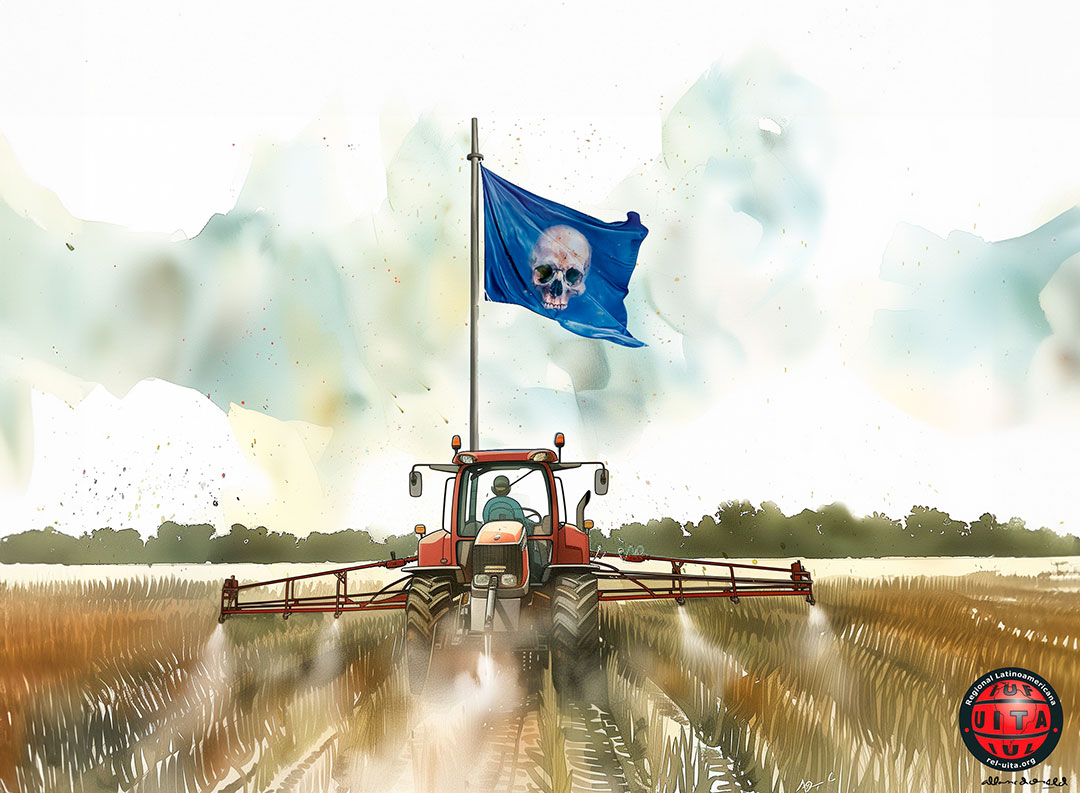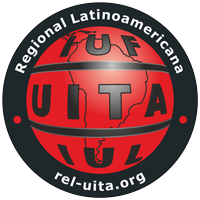Carpet bombed agriculture
Toxic agrochemicals and the cartel of multinational corporations were on the agenda of the National Seminar on Health and Work in the Food Sector, held on July 25 and 26 in the southern Brazilian city of Chapecó, organized by CONTAC (Brazil’s National Confederation of Food Workers) and the IUF.
Gerardo Iglesias
28 | 8 | 2024

Image: Allan McDonald
Biocide poisoning in Brazil is escalating to public disaster proportions and is expected to worsen in the coming years. Jair Bolsonaro was the “Chosen One,” the ideal man to serve the purposes of agribusiness, which found in him the perfect match.
Champion of unrestricted gun possession and use, Bolsonaro is known to have brazenly declared: “We need to do what the dictatorship should have done: kill 30,000 people.” He came to power in the federal government to boost the chemical arsenal of large rural producers who daily bombard their own lands and that of others, above and below ground, penetrating deep into the aquifers, turning nature and the environment into a killing field.
The powerful Agricultural Parliamentary Front (which controls 44 percent of the lower chamber and 33 percent of the senate) catapulted Bolsonaro to the presidency on January 1, 2019.
The loyal and grateful Chosen One knew just how to repay that huge favor: he appointed the leader of the rural legislators, Tereza Cristina—dubbed the “Poison Muse” by her own peers—as Minister of Agriculture.
What made Bolsonaro’s approach so unprecedented was the insanely record-breaking speed with which he granted new licenses, leaving the doors of Brazil wide open to all the waste banned by civilized (hypocritical) countries. The country currently imports from the European Union 10,000 tons of pesticides that are banned in the old continent.
However, it would be inaccurate and an exaggeration to lay all the blame on the former president. The construction of the dominant agrarian model in Brazil dates back to the 1960s and the “Green Revolution,” a global process exported by the United States, which marked a milestone in the “chemicalization of agriculture through the intensive use of pesticides,” according to Argentine researcher Cecilia Gárgano.
“Industrial agriculture is more dependent on oil than on land,” as Jorge Riechmann aptly describes this model. It is a chemically dependent suicidal agriculture of addicted plants.
With an agriculture shaped and determined by the demands of the chemical-pharmaceutical industry, the global toxic agrochemical market continues to grow steadily. While it saw a 93 percent increase globally in the last ten years, in Brazil it grew by 190 percent in that same period.
So it should come as no surprise that toxic agrochemicals were detected in more than 90 percent of all water analyses conducted in Brazil; that after Nigeria and India, Brazil is the country that applies the greatest percentage of HHPs (highly hazardous pesticides) in its fields; and that scientific studies have also detected glyphosate in human breast milk, as Carlos Amorín has reported here.
While Brazil and the world count the dead by toxic agrochemicals, a small handful of multinational corporations are profiting as never before in the name of modern agriculture and the fight against hunger.
